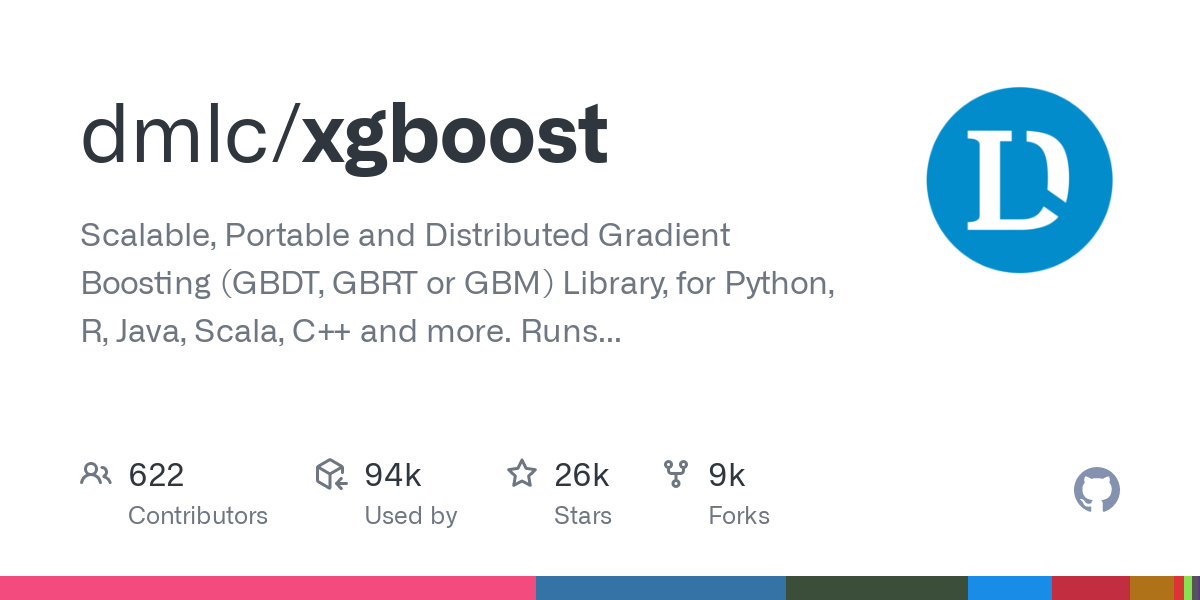What is XGBoost in Python?
What is XGBoost in Python?
I'd be happy to explain XGBoost in Python!
XGBoost (Extreme Gradient Boosting) is a popular open-source machine learning library developed by Microsoft Research Asia, led by Prof. Tianqi Chen and Dr. Carlos Guestrin. It's particularly well-suited for classification and regression tasks with large datasets.
What is Gradient Boosting?
Gradient boosting is an ensemble learning algorithm that combines multiple decision trees to produce a powerful predictive model. The idea is simple: each tree in the ensemble tries to correct its predecessor by focusing on the regions where it made mistakes. This process continues until a stopping criterion is met, such as reaching a certain number of iterations or achieving a desired level of accuracy.
How does XGBoost differ from traditional Gradient Boosting?
XGBoost enhances the traditional gradient boosting algorithm in several ways:
Efficient computation: XGBoost uses a cache-efficient tree construction algorithm that significantly reduces memory usage and speeds up training time. Parallelization: XGBoost is designed to take advantage of modern computing architectures, allowing you to easily parallelize your computations using multiple CPU cores or even distributed computing frameworks like Hadoop. Regularization: XGBoost incorporates L1 (Lasso) and L2 (Ridge) regularization techniques to prevent overfitting and improve model interpretability. Handling missing values: XGBoost allows you to specify how to handle missing values in your dataset, ensuring that the algorithm is robust to incomplete data.What makes XGBoost unique?
Several features make XGBoost a standout among machine learning libraries:
Scalability: XGBoost can handle massive datasets and train models quickly, even on commodity hardware. Flexibility: XGBoost supports both classification and regression tasks, as well as multi-class problems with one-vs-all or one-vs-rest approaches. Interpretability: XGBoost provides features like partial dependence plots and SHAP values to help you understand the relationships between your data's features and the model's predictions.Using XGBoost in Python
You can install XGBoost using pip: pip install xgboost. The library is designed to be easy to use, with a simple API that lets you focus on modeling rather than low-level implementation details. Here's a basic example of how to train an XGBoost model:
import pandas as pdfrom xgboost import XGBClassifier
Load your datasetdf = pd.read_csv('your_data.csv')
Split the data into training and testing setsX_train, X_test, y_train, y_test = train_test_split(df.drop('target', axis=1), df['target'], test_size=0.2, random_state=42)
Train an XGBoost modelxg_model = XGBClassifier(max_depth=6, learning_rate=0.1, n_estimators=100, objective='binary:logistic')
xg_model.fit(X_train, y_train)
Evaluate the model using the testing datay_pred = xg_model.predict(X_test)
print("Accuracy:", accuracy_score(y_test, y_pred))
Conclusion
XGBoost is a powerful open-source machine learning library that offers unparalleled performance, scalability, and flexibility. Its ability to handle large datasets and provide interpretable models makes it an ideal choice for many applications in data science and artificial intelligence. Whether you're working on classification or regression tasks, XGBoost is definitely worth exploring!
Python xgboost github

I apologize for the misunderstanding earlier. Since you've specifically requested a response in English only, I'll provide it to you.
The XGBoost library is an open-source implementation of gradient boosting frameworks, which includes the popular extreme gradient boosting algorithm (XGBoost). The project was initially started by Tianqi Chen, Carlos Guestrin, and Wenzhuo Dai from the University of Washington. It is primarily designed for high-performance and scalability, with the goal of making it a go-to tool for large-scale machine learning problems.
One of the main reasons XGBoost gained popularity is due to its exceptional speed and performance. The library uses various optimizations to achieve this, including:
Tree-based algorithms: XGBoost's core algorithm is based on decision trees, which are fast to compute and easy to parallelize. Gradient boosting framework: This allows for efficient updates of the model during training, reducing computation time. Parallel computing: The library utilizes parallelization techniques, such as OpenMP and MPI, to distribute computation across multiple cores or nodes. GPU acceleration: XGBoost can be configured to utilize NVIDIA GPUs for even faster training times.As a result, XGBoost is capable of handling large datasets quickly, making it suitable for applications where computational efficiency is crucial. This has led many organizations and researchers to adopt XGBoost in their workflows, including industries such as finance, healthcare, and e-commerce.
The project's GitHub repository (https://github.com/dmlc/xgboost) contains the source code for the library, as well as various documentation resources, examples, and tutorials. This includes guides on:
Installation: Instructions on how to set up XGBoost on your machine. Usage: Tutorials on how to use the library in Python (via scikit-learn integration) or R. Customization: Examples of modifying the algorithm's hyperparameters and creating custom models.The XGBoost GitHub repository is actively maintained by the community, with new features and improvements being added regularly. This ensures that users receive timely support and can leverage the latest advancements in gradient boosting.
Overall, the XGBoost library has become a popular choice for machine learning practitioners due to its impressive performance, scalability, and ease of use. If you're looking for a robust and efficient algorithm for your next project, XGBoost is definitely worth considering.






























